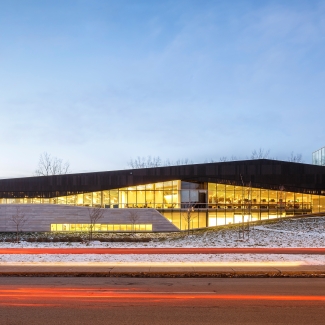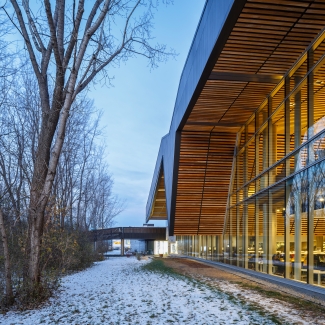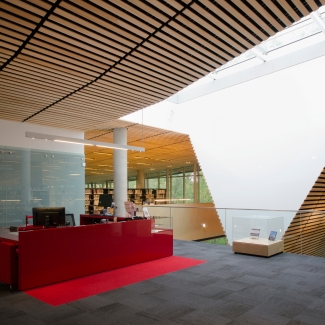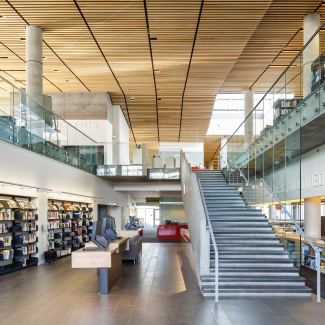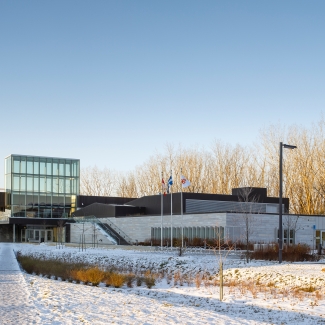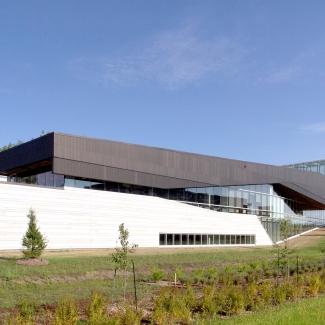Project completed in consortium: Cardinal Hardy*/ Labonté Marcil / Eric Pelletier* architects (*Lemay)
Envisioned as a 21st-century library, the Bibliothèque du Boisé is more than a space for housing documents: it's a cutting-edge cultural, technological and creative hub. It has become a landmark for the citizens of Montreal’s Saint-Laurent borough and an inspiration to other communities. By integrating numerous functions, the library embraces revolutionary changes in information management and educational technologies. With its open spaces and cozy alcoves, the library fosters exchange and generates a sense of belonging and community.
Since its inauguration in 2013, the library has quadrupled visitor forecasts and received praise for its architecture, interior design, project management, environmental aspect and its use of steel, wood, and zinc.
The idea behind the design was to create a new type of learning experience that would reinforce the building’s value to the community and offer an attractive centre for cultural and community activities. Positioned between an urban and a natural setting (Thimens Boulevard and Marcel-Laurin Park), the library both strengthens the artery’s civic function and enhances the protected woodland behind it by providing a new point of entry.
A high-performance building, recently certified LEED Platinum, it has been called the eco-friendliest library in Canada. Its integration of mechanical systems is innovative: a passive heating system uses the heat accumulated in a glass prism for redistribution through a geothermal loop. Low-flow ventilation through the floors reduces the number of ducts required. The objective for the surrounding site was to strengthen the existing natural environment with a green approach to the retention basins’ design and operation, xeriscaping, and the construction and layout of parking areas and related facilities.
The project preserved trees and planted over 100 new ones, also adding 5,000 shrubs, ground cover, and climbing plants, all of them indigenous. A storm water recovery system supplies water to an adjacent wetland. Particular attention was paid to both user comfort and energy efficiency in the choice of lighting, which relies mostly on natural light, combined with task lighting, for energy savings of 63 percent. The use of certified wood, low-emission and recycled or regional materials was emphasized. Seventy-five percent of the library’s total floor area receives natural light.




